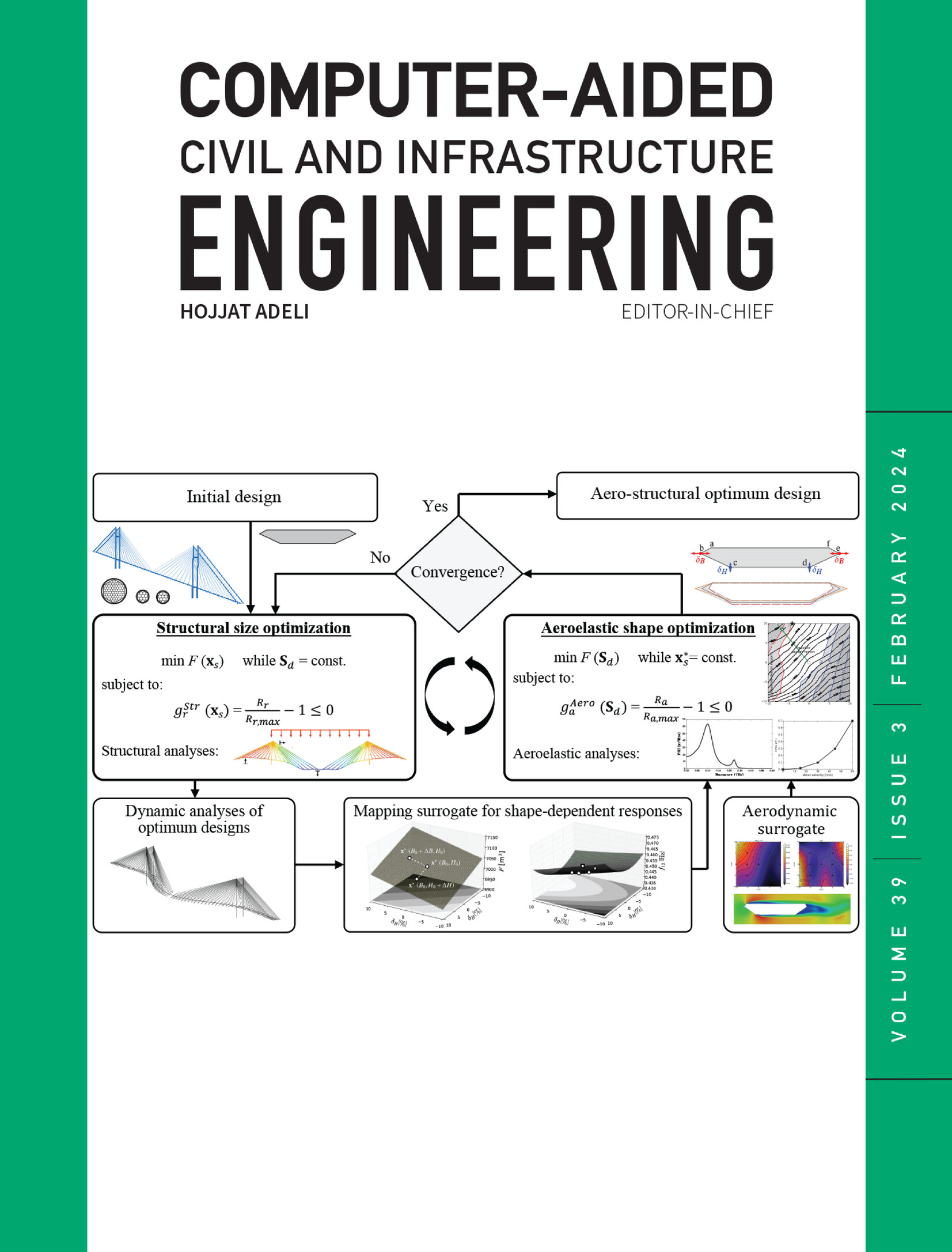一种基于物理数据驱动的盾构隧道路基沉降实时预测方法
IF 8.5
1区 工程技术
Q1 COMPUTER SCIENCE, INTERDISCIPLINARY APPLICATIONS
引用次数: 0
摘要
盾构隧道路基沉降的实时预测在工程应用中具有重要意义。然而,数据驱动的方法容易出现过拟合,而物理方法依赖于一定的假设,难以选择满意的参数。虽然目前有物理数据驱动的方法,但它们通常需要使用物理模型进行大量的迭代计算,这使得它们无法进行实时预测。本文介绍了一种轻量物理数据驱动的盾构隧道路基沉降预测方法。核心概念包括使用物理模型的单一计算来提供弱约束。然后设计了一个深度学习网络来捕获基于ConvLSTM的时空相关性。通过迭代合并实时数据,进一步增强了对物理约束的学习。该方法将数据驱动方法的预测能力与物理规律的合理约束相结合,在实际工程中取得了良好的效果。结果表明,该方法满足工程实时预测要求,确定系数为0.980,均方根误差为0.22 mm,平均绝对误差为0.15 mm。此外,它优于物理模型和数据驱动模型,并表现出良好的泛化性能。本研究为工程实践提供了有效的指导。本文章由计算机程序翻译,如有差异,请以英文原文为准。
A lightweight physics-data-driven method for real-time prediction of subgrade settlements induced by shield tunneling
Real-time prediction of subgrade settlement caused by shield tunneling is crucial in engineering applications. However, data-driven methods are prone to overfitting, while physical methods rely on certain assumptions, making it difficult to select satisfactory parameters. Although there are currently physics-data-driven methods, they typically require extensive iterative calculations with physical models, which makes them unavailable for real-time prediction. This paper introduces a lightweight physics-data-driven method for predicting subgrade settlement caused by shield tunneling. The core concept involves using a single calculation of the physical model to provide a weak constraint. A deep learning network is then designed to capture spatiotemporal correlations based on ConvLSTM. By iteratively incorporating real-time data, the learning of physical constraints is further enhanced. This method combines the predictive power of data-driven method with the reasonable constraints of physical laws, validated a good performance in a practical project. The results demonstrate that this method meets real-time prediction requirements in engineering, achieving an coefficient of determination of 0.980, a root mean square error of 0.22 mm, and a mean absolute error of 0.15 mm. Furthermore, it outperforms both physical and data-driven models and demonstrates good generalization performance. This study provides effective guidance for engineering practices.
求助全文
通过发布文献求助,成功后即可免费获取论文全文。
去求助
来源期刊
CiteScore
17.60
自引率
19.80%
发文量
146
审稿时长
1 months
期刊介绍:
Computer-Aided Civil and Infrastructure Engineering stands as a scholarly, peer-reviewed archival journal, serving as a vital link between advancements in computer technology and civil and infrastructure engineering. The journal serves as a distinctive platform for the publication of original articles, spotlighting novel computational techniques and inventive applications of computers. Specifically, it concentrates on recent progress in computer and information technologies, fostering the development and application of emerging computing paradigms.
Encompassing a broad scope, the journal addresses bridge, construction, environmental, highway, geotechnical, structural, transportation, and water resources engineering. It extends its reach to the management of infrastructure systems, covering domains such as highways, bridges, pavements, airports, and utilities. The journal delves into areas like artificial intelligence, cognitive modeling, concurrent engineering, database management, distributed computing, evolutionary computing, fuzzy logic, genetic algorithms, geometric modeling, internet-based technologies, knowledge discovery and engineering, machine learning, mobile computing, multimedia technologies, networking, neural network computing, optimization and search, parallel processing, robotics, smart structures, software engineering, virtual reality, and visualization techniques.

 求助内容:
求助内容: 应助结果提醒方式:
应助结果提醒方式:


